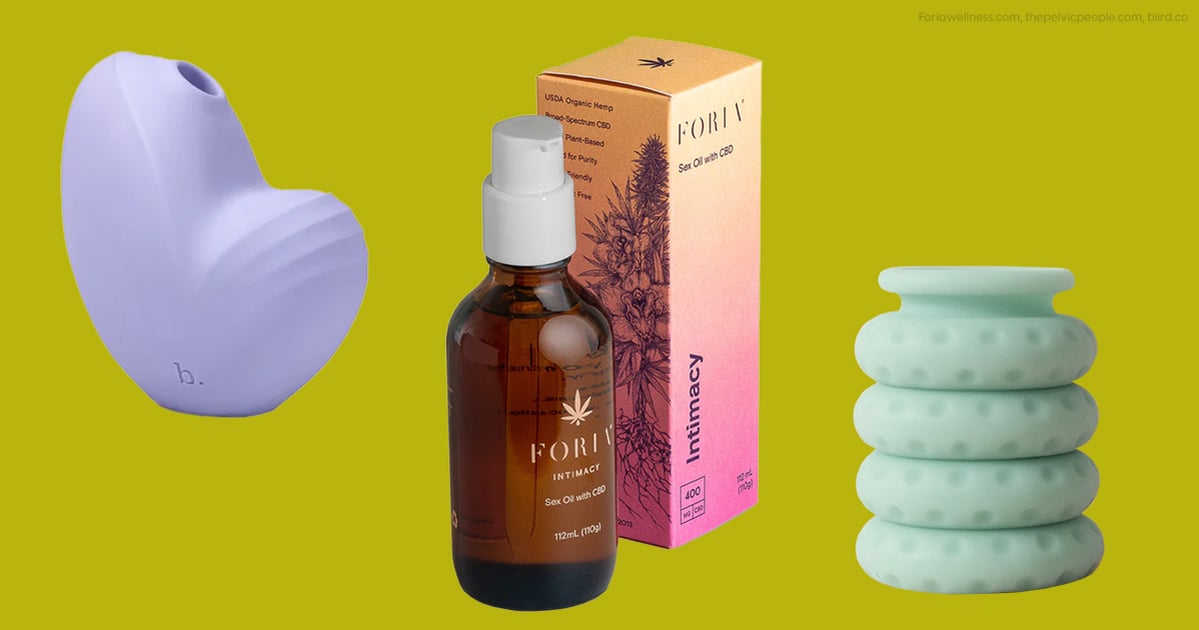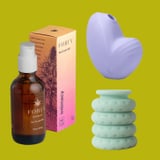If you have endometriosis, you’ve likely faced challenges when it comes to intimacy. For many people with endometriosis (myself included), penetrative sex can be painful and uncomfortable. There’s also an emotional component, and chronic illness can impact your body image, relationships, and self-esteem.
Edometriosis is a chronic, inflammatory condition in which endometrial-like tissue grows outside the uterus. There’s no known cause or cure, but there are treatment options available to help manage symptoms and improve quality of life. For me, endometriosis has affected every part of my life. From struggling with daily pain and chronic fatigue to being gaslit by doctors and hating my body, living with this condition has been nothing but an uphill battle.
“Even though the most common symptom of endometriosis is painful periods (dysmenorrhea), endometriosis is much more than just a ‘menstruation disease,'” endometriosis specialist Amanda Chu, MD, a board-certified gynecologic surgeon at Seckin Endometriosis Center, says. “Endometriosis can have whole-body symptoms.” Not every person with endometriosis will experience the same symptoms, but there are some common ones to look out for like painful sex, chronic fatigue, infertility, and more.
Even though it can be challenging, there are ways to navigate sexual intimacy and find pleasure while managing endometriosis; it just requires understanding, patience, communication, and finding what works best for you and your sex life.
“Reclaiming your sex life with endometriosis is not a one-size-fits-all approach,” Madeline Lucas, LCSW, a sex therapist at Madeline Lucas Psychotherapy, says. “Allow yourself to go slow, change your mind when you need to, and ultimately remember you desire pleasurable, pain-free sex.”
Before we dive into endometriosis-friendly sex tips, it’s important to recognize that not every person with endometriosis experiences the same symptoms or challenges when it comes to sex. Some people may not experience pain during sex at all, while others may have severe pain.
If you want more personalized advice that’s specific to your body and situation, consult a healthcare professional who specializes in endometriosis, like an excision specialist or pelvic pain physical therapist. Most importantly, remember to listen to your body and prioritize your comfort and pleasure. Use this guide as a starting point, and customize it to fit your unique experience with endometriosis.
Why Can Endometriosis Make Sex Painful?
According to Heather Jeffcoat, DPT, owner of Femina Physical Therapy and author of “Sex Without Pain,” there are a few reasons why sex can be painful for individuals with endometriosis.
For starters, the mere presence of these abnormal growths can cause inflammation and irritation in the pelvic region, making penetration uncomfortable or painful. “The pelvic floor and abdominal muscles in the area will guard around areas of pain, creating muscles that are either short, tight, or in spasm,” Jeffcoat says. “During penetrative intercourse, this can cause the muscles to have difficulty lengthening to accommodate a penis, vibrator, or dildo.”
If the endometriosis is located near the posterior cul-de-sac, the space between the uterus and rectum (a very common place for deep-infiltrating endometriosis to occur), it can also lead to pain during deep penetration or certain sexual positions, like the missionary sex position, depending on how advanced the endometriosis is and where it’s located.
“But remember, it doesn’t have to be deeply infiltrative endometriosis for those symptoms to occur,” Dr. Chu says.
Jeffcoat also notes that the National Institute of Health recognizes endometriosis as a chronic pain condition with potential nerve involvement. “Specifically, the most common overlapping pain conditions with endometriosis are vulvodynia, bowel issues, and bladder pain [formerly known as interstitial cystitis, or ‘IC’],” says Jeffcoat. “Vulvodynia is vulvar pain, and if your vulva hurts, initial penetration will be painful.”
The Best Tips For Having Sex If You Have Endometriosis
If you are someone who experiences pain with intercourse due to endometriosis, you may feel like there’s no solution or that you have to avoid sex altogether. This is especially true for people who experience vaginismus or other conditions that can make penetration impossible, physical therapist Ashley Rawlins, DPT, says. “The pain is also understandably dreadful, and it can be scary to even think about putting yourself through the pain of sex again,” Rawlins says. “This can lead to a fear-avoidance cycle that can make pain worse, ultimately impacting your libido and ability to become aroused and experience orgasm.”
Fortunately, there are things you can do to make sex more comfortable and enjoyable. Below are some tips for having sex if you have endometriosis.
Communicate with your partner about your needs and limitations.
The key to having a good sex life is open and honest communication with your partner. It’s important to let them know about your condition, any limitations or discomfort you may experience, and what activities or techniques work best for you.
“Speak up if anything is not feeling good,” Anna Richards, sex educator and founder of the ethical porn site FrolicMe, says. You may want to implement a
safe word to indicate you want things to stop completely, or you can simply say “hold on” or “slow down.” If your partner prioritizes their own pleasure over your comfort, however, it may be time to reevaluate the relationship.
See a pelvic floor physical therapist.
If you experience vaginismus or have pelvic floor muscle dysfunction, seeing a pelvic floor specialist can help you release pain and tension in your abdominals, hips, and pelvic floor with evidence-based rehab techniques, including vaginal dilator therapy.
“Vaginal dilators, sometimes referred to as vaginal trainers, are medical devices used to help prepare the vaginal muscles for penetrative intercourse,” Jeffcoat says. “They’re made of plastic, silicone, or stainless steel, and come in different sizes from as thin as a pinky finger to as large as your partner. They’re often sold in kits of four to eight so that you can work on a transition to penetrative intercourse.”
Experiment with outercourse.
Sex isn’t just penetrative. Engaging in outercourse, which includes activities like kissing, touching, and oral sex, can still bring pleasure and intimacy without causing pain.
Manual stimulation of the clitoris or other erogenous zones, like your nipples and thighs, can be a satisfying alternative to penetrative sex. By using your hands or a vibrator, you can focus on pleasurable sensations without the added pressure or discomfort of penetration.
Plus, this could be a fun new way to introduce voyeurism and mutual masturbation into your sexual repertoire. “Non-penetrative sex, where the focus is on manual stimulation for arousal, encourages far more consensual voyeuristic pleasure,” says Richards.
If any external or internal touch feels like too much, however, Rawlins recommends starting with non-sexual touches. “Focus on the experience of that touch (i.e., what it feels like on your skin, the texture, temperature, etc), while turning away from the false danger signals your body is used to giving you,” Rawlins says. “As your nervous system begins to repattern, your body begins to heal, and touch feels more comfortable (even sexual), you progress to more sexual touch, and even sex if that’s your goal.”
Use a buffer.
If you’re not into external stimulation, using a buffer during penetrative sex can help reduce friction and discomfort. A buffer is an external object or material that acts as a cushion or barrier to provide additional comfort during penetrative sex.
The Ohnut Depth-Limiting Ring Set ($75), for example, is a stackable, ring-like device that can be adjusted to provide a comfortable depth during penetration. The rings, designed to fit onto a penis, vibrator, or dildo, can be added or removed to adjust the depth of penetration and prevent discomfort by controlling how deeply the penetrating object goes.
Don’t forget about the lube.
Because common symptoms of endometriosis include pain and vaginal dryness using lubrication during sex is a must.
Natasha Marie Narkiewicz, a sexual wellness expert and head of communications at MysteryVibe, recommends using the Foria Intimacy Sex Oil with CBD ($44), which is a coconut-oil based formula that combines CBD and coconut oil. If you’re using condoms, however, oil-based lubes can break down latex, making condoms less effective.
If you and your partner are using condoms, Narkiewicz recommends using the Pjur Med Repair Water-Based Lube ($15, originally $17) or the Uberlube Silicone Lube ($20) if you want a longer-lasting option. (Just don’t pair silicone-based lube with a sex toy made out of silicone, as it will break down the material of the sex toy.)
The Best Sex Toys For People With Endometriosis
Everyone is different, so the best sex toy for you may not be the same as someone else with endometriosis. Here are some suggestions based on personal experiences and expert recommendations.
Some people love clitoral stimulation, while others may find it a bit too intense. The
Namii Clitoral Suction Stimulator ($119) offers a nice middle ground where you can enjoy gentle suction without overwhelming sensitivity. It sits just right in front of your underwear if you don’t want to hold it (though you can hold it if you’d like), and it comes with a really cute nightlight charger that adds a little extra mood lighting to your bedroom.
The Crescendo 2 ($239, originally $299) is perfect for those who experience pelvic or penetration pain because of endometriosis. Not only is it clinically proven to help with pain and dryness, but it was designed to improve blood flow for better lubrication.
“Crescendo 2’s bendable design allows each user to find the shape, angle, and depth of penetration that works for their body,” Narkiewicz says. “Additionally, its six motors can be independently programmed to send medically optimized vibrations to different parts of the vagina and vulva, which helps relax and release the pelvic floor muscles, increase blood flow, arousal, and alleviate vaginal dryness.”
The VIM Vibrating Wand ($169) is the world’s first weighted vibrating wand, and it’s honestly the best wand vibrator I’ve ever had. I’m not a huge fan of wand vibes, and I didn’t think this one would be any different than the others I have, but the waves of pleasure this toy delivers are truly incredible. This vibe is designed for edging, and the vibrations from the weighted head give off a deep, rumbling sensation that can be felt deep into the pelvic area without penetration or excessive pressure.
The Dame Pillo ($95), recommended by Lucas, isn’t a sex toy, but an accessory that can help provide comfort and support and reduce pressure on sensitive areas. It allows the receiver to elevate their hips and lower back for more comfort during sex. “The Pillo allows penetration or entry of penis at a more enjoyable, pain-free angle,” Lucas says. “It can also be used in different positions on your back or your stomach for some support and elevation in the waist area.”
The Best Sex Positions For People With Endometriosis
Trying different sex positions can also help alleviate discomfort and pain during sex for people with endometriosis. Jeffcoat recommends trying sex positions that allow for shallow penetration to avoid deep pelvic pain, like any variation of the spooning sex position. It can also be helpful to find a sex position that allows the person with endometriosis to be more in control over the depth and angle of penetration.
“If you have more pain in your inner thighs or with deeper penetration, choosepositions in which you are on top,” Rawlins adds. This includes the cowgirl sex position, reverse cowgirl, or really, any position where you have the ability to control the angle and depth.
Tabitha Britt is a freelance writer, editor, and SEO expert with more than 12 years of experience. She’s also the founding editor in chief of Do You Endo, an endometriosis magazine for individuals with endometriosis by individuals with endometriosis. She specializes in writing about sexual health and wellness and living with chronic illnesses, including endometriosis and interstitial cystitis.




